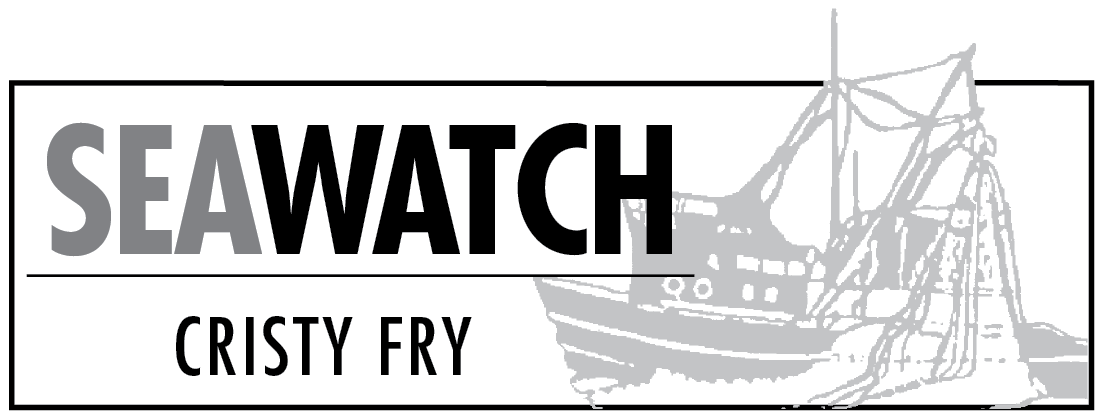Whales and the North Pacific Fishery Management Council potentially transformed the black cod fishery last week when the council voted unanimously to allow pots to once again be used in the fishery as a deterrent to whale predation.
Whales have become an increasing problem in the black cod fishery, with sperm and killer whales both apparently learning that when they hear the hydraulics come on, it means dinner.
The whales do not appear to be as attracted by halibut; they seem to prefer the oilier black cod.
The phenomenon is not restricted to Alaska. Longline fishermen as far away as Chile, Hawaii and Australia report similar problems.
Whale conflicts were first reported in the Bering Sea in the mid-20th century, but spread to the Gulf of Alaska by the late 1980s, apparently because adult whales taught their young the technique.
To adapt, in the early 1980s, boats came up from Outside with pots and fished black cod. In 1983 they caught the entire quota before the local small boat longline fleet was able to get out fishing.
In 1985, the council passed Amendment 14, which phased out the use of pots in the Gulf of Alaska by 1986 in Southeast, and the next couple of years in rest of the Gulf of Alaska.
The measure to allow pots back into the fishery saw stiff opposition from smaller boat fishermen who worry that the best fishing grounds will be covered with pots, which tangle with longline gear and can lead to it breaking and being lost.
Smaller boats are less able to handle pots on deck, even the stackable ones commonly used in the black cod fishery.
The other concern is the cost of switching gear types. Some fishermen put that cost at around $200,000.
Dungeness Gear Works in Everett, Wash., which builds gear for the fishery, carries in stock a pot that weighs around 80 pounds and costs around $215, not counting lines and buoys.
Boats longline the pots, so it is not necessary to have a line and buoys for each pot, only the ends of the string, but the line connecting the pots is also a major expense.
How many pots each boat uses depends largely on the size of boat, but it is not unheard of for boats to have 200-300 pots each.
Much of the opposition to the measure came from Southeast Alaska.
Linda Behnkin, of Alaska Longline Fishermen’s Association based in Sitka, said that organization had asked the council to phase in the use of pots, beginning in the western Gulf of Alaska, where she said whale predation issues are more severe, to assess what the impacts of adding pots to the fishery would be.
“We were especially concerned about … gear conflicts with small longline boats,” Behnkin said. “We were hoping they would start in one area and see what the problems were before they expanded to allow pots in other areas.”
The council did put in place a lower pot limit for Southeast and western Yakutat areas, 120 pots compared to 300 pots elsewhere, as well as a requirement that boats in Southeast bring their pots out of the water when they run to town to deliver.
Buck Laukitis, board member for the North Pacific Fisheries Association, said he thought their position, which supported the pot limit among other measures, struck a balance.
“We’re a group made up of longliners, and we had (members) with longline/pot experience” Laukitis said. “We’ve been tracking this since the beginning, but we didn’t really take a position, we wanted to make sure we had a program that wasn’t going to unduly impact longliners, but still provide the opportunity to pot fish.”
Laukitis said there were people testifying at the Council meeting that it was taking 140,000 pounds of black cod mortality to catch 100,000 pounds of quota due to whale predation.
“We all realize there’s this huge problem,” he said. “I think what we have is the start of a partial solution. It’s not going to solve all the whale problems by any means, because there’s not going to be that many people who can convert (to pots), but giving people no opportunity to harvest in a different way, you don’t even begin to address the problem.”
Laukitis added that grounds or gear conflicts are not a conservation issue, but optimum yield and undocumented mortality is.
“That’s basically what we’ve got right now,” he said. “It’s unquantified, but everyone who testified basically said that it’s growing, and there are people with some pot experience who said ‘we don’t know how much the longliners are losing to whales, but I do know one thing: I’ve never had a whale take a black cod out of a pot.’”
However, whales may be smart enough to rise to the challenge.
“I wouldn’t put it past them,” Laukitis said. “At some point we might be using steel cable for pucker straps.”
Another issue is bycatch, which is largely non-existent with most pot fisheries. What bycatch there is, is mostly unharmed.
The council did not define a black cod pot, leaving the definition as groundfish pot, which requires a nine-inch excluder to prevent large halibut from entering the pot.
However, Laukitis noted some pot boats have observed that if whales are following the boat and get frustrated from lack of fish, they will eat whatever bycatch is thrown overboard before it can make it back to the bottom, which may further impact the halibut fishery.
Laukitis countered some of the opposition by saying that the council did not require boats to use pots, it simply made an allowance for boats who wish to do so.
He added that it was an industry-generated proposal, not a mandate from the council.
It is difficult to say when boats can actually start putting pots on their boats. There will be a comment period followed by the writing of the final regulations.
Cristy Fry can be reached at realist468@gmail.com.


